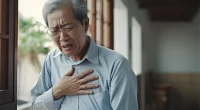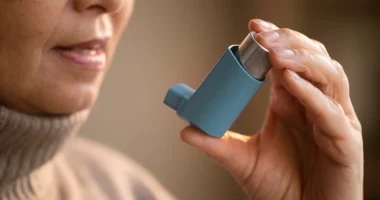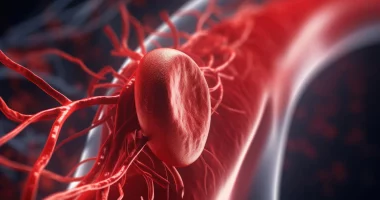Apraxia happens when someone’s brain doesn’t work right because of conditions like stroke, dementia, or head injuries. It makes it hard for them to do certain gestures or movements.
For instance, someone with apraxia might struggle to tie their shoes or button their shirt. Individuals with apraxia of speech have trouble talking and saying what they want to say.
Causes
Apraxia takes place when specific parts of the brain don’t work well. This can occur if there’s a problem in the cerebral hemispheres, which are big parts of the brain.
This issue can arise when there’s damage to the brain along the pathways that store memories of how to do movements. So, someone with apraxia might have trouble accessing these memories.
Apraxia can be caused by different things like:
- Head injury
- A stroke
- Dementia
- Tumors in the brain
- A disease called corticobasal ganglionic degeneration
It’s more likely to happen in old people because they’re more prone to neurological problems like dementia and stroke. Sometimes, if someone gets apraxia because of swelling from a brain stroke, it may get better after a few weeks.
In some cases, apraxia can also be passed down in families. If a baby has it from birth, it could be because of issues with their central nervous system.
Symptoms
The main sign of apraxia is having trouble doing basic movements, even though the person can move their body normally and understand instructions to move.
Individuals with apraxia might struggle to coordinate or control their movements when they want to. Sometimes, they might also face brain damage that leads to aphasia, which is when someone has trouble understanding or using words correctly.
Types
There are different kinds of apraxia, and each affects the body in its own way:
Limb-kinetic apraxia
People with this type can’t use their arms, fingers, or legs for precise movements, even though they might understand how to do it. For example, they might struggle to use a tool like a screwdriver, even if they’ve used it before.
Ideomotor apraxia
People with this type can’t copy movements or follow suggestions for movements, even when they’re told verbally.
Conceptual apraxia
This is similar to ideomotor apraxia. Individuals with this type can’t do tasks that have more than single step.
Ideational apraxia
People with this type can’t plan out a movement, like getting dressed or taking a bath. They might find it difficult to follow an order of movements.
Buccofacial apraxia
People with this type can’t make certain movements with their lips and faces when they’re told to.
Constructional apraxia
People with this type can’t draw, copy, or build simple figures or diagrams.
Oculomotor apraxia
This affects the eyes. People with this type have trouble moving their eyes when they’re told to.
Verbal apraxia
People with this type have trouble making the right movements for speech. They might struggle to produce sounds or understand speech rhythms.
Diagnosis and Tests
Diagnosis and tests for apraxia involve a thorough examination of the individual’s medical history and symptoms to pinpoint any potential underlying causes. This process also aims to differentiate apraxia from similar conditions like motor aphasia, weakness, or dyspraxia. By analyzing various aspects, including verbal and nonverbal communication, participation in activities, coordination, and auditory abilities, doctors can gather crucial information for an accurate diagnosis.
During the diagnostic process, doctors may conduct a range of tests. These tests evaluate both physical abilities, focusing on motor coordination skills, and linguistic capabilities, assessing the comprehension of commands. Physical examinations may involve observing how the individual performs certain movements and tasks to gauge coordination levels. Meanwhile, language tests aim to determine the person’s understanding of spoken instructions and their ability to respond appropriately.
Overall, the diagnosis of apraxia involves a comprehensive evaluation that considers multiple factors, including medical history, symptoms, and the results of various tests. This thorough approach helps healthcare professionals make an informed diagnosis and develop an appropriate treatment plan tailored to the individual’s needs.
Treatment
Treatment for apraxia depends on the underlying cause. If it’s caused by another health issue, treatment will focus on that first.
Occupational and physical therapy can be helpful. These therapies may include:
- Practicing making sounds and movements repeatedly.
- Working on rhythms of speech with tools like a finger-snapping or metronome.
- Learning to communicate using paper and pen or a computer.
Regular sessions with a speech therapy specialist can also be beneficial. They can teach techniques such as:
- How to move mouth muscles to produce certain sounds.
- Acquiring sign language for individuals who struggle with verbal communication.
- Using all senses to improve speech, like listening to sounds and watching in a mirror how the mouth moves to make sounds.
Management
Managing apraxia is something that children or adults will have to do for their whole lives.
Special classes in school and different types of therapy can make life easier for people with apraxia. These therapies include physical therapy to help with movements, speech therapy to improve talking skills, and occupational therapy to help with daily activities.
For those with severe apraxia, might need help from others to do everyday things and might not be able to live on their own.
Outlook
Individuals with apraxia can differ based on their own situation. If someone has apraxia because of a stroke or another brain problem, treating that issue might also help with apraxia.
As stated by the National Institute of Neurological Disorders and Stroke, some individuals with apraxia get much better as time goes on, but others might not see as much improvement. Some keep improving for years or decades.
With support from family, friends, and others, individuals with apraxia can learn to handle their condition better.
Summary
Apraxia is a condition where the brain struggles to control movements, often due to neurological issues like stroke or brain injury. Diagnosis involves careful examination of symptoms and medical history, ruling out similar conditions. Treatment includes therapies like physical and speech therapy, aiming to improve movement and communication skills.
Managing apraxia requires lifelong support and assistance, especially for those with severe forms. The outlook varies, with some experiencing significant improvement while others may see slower progress. With proper support and therapy, individuals with apraxia can learn to navigate daily life more effectively.
External links









